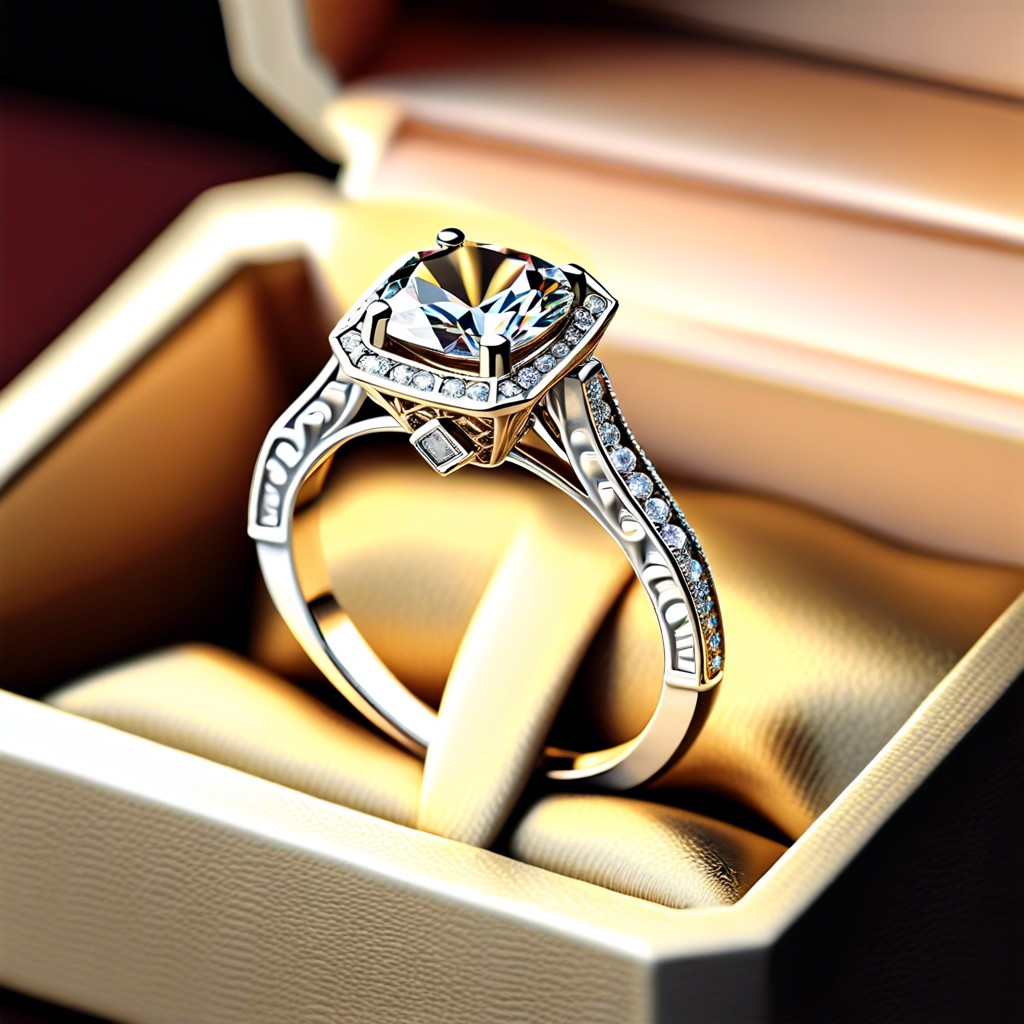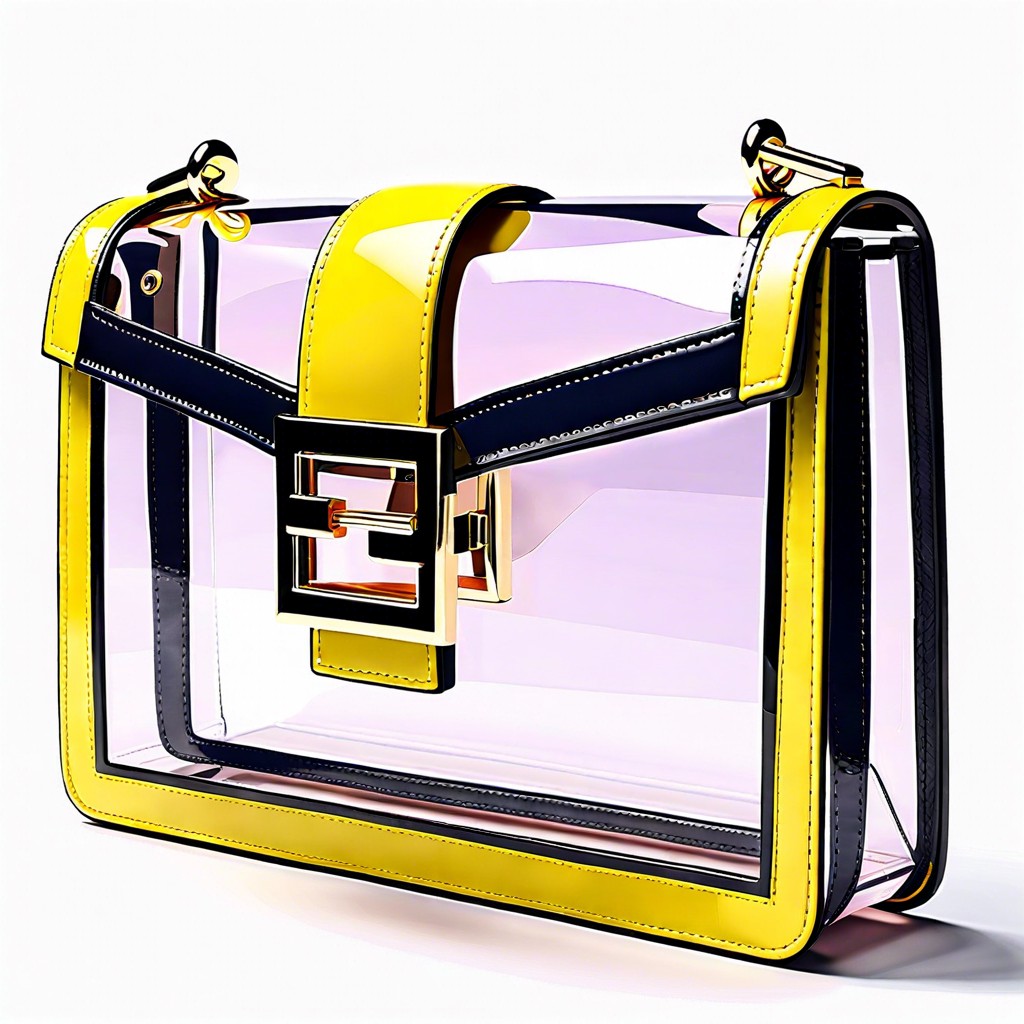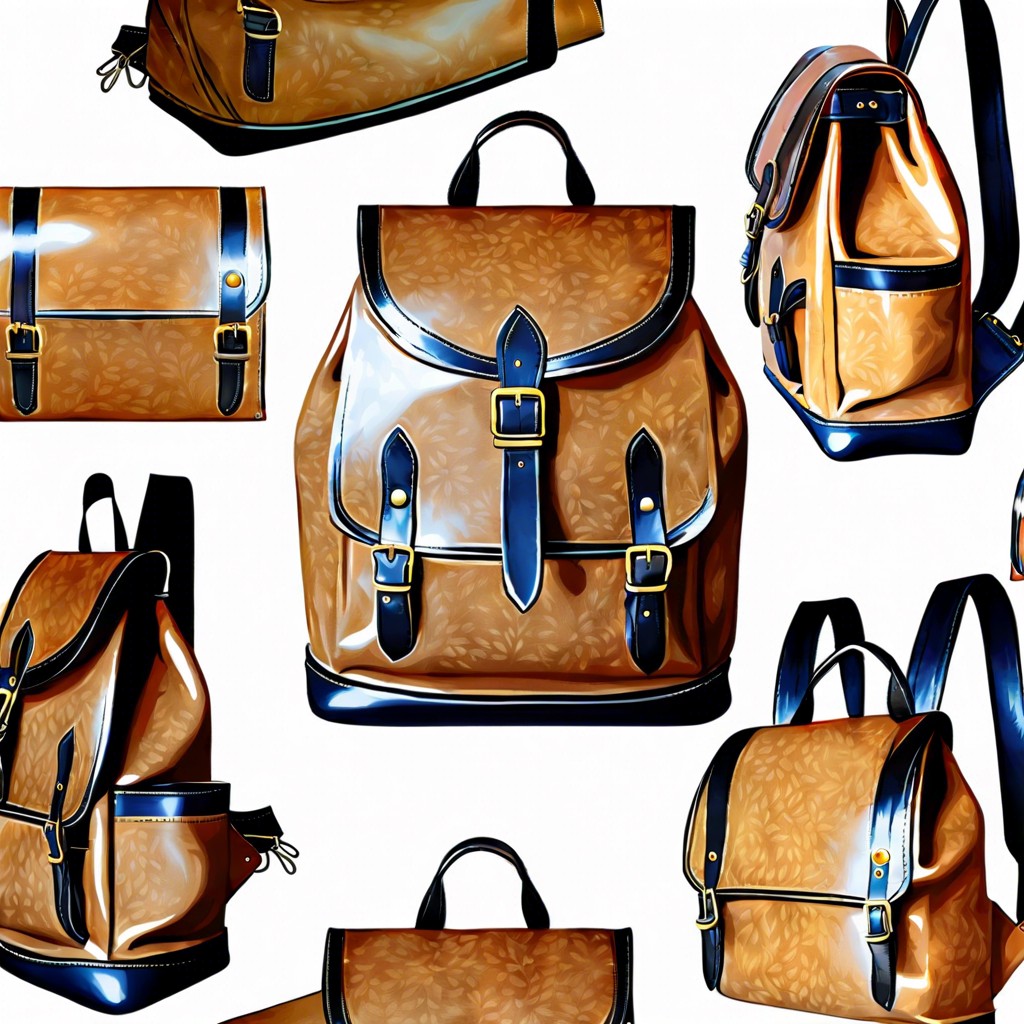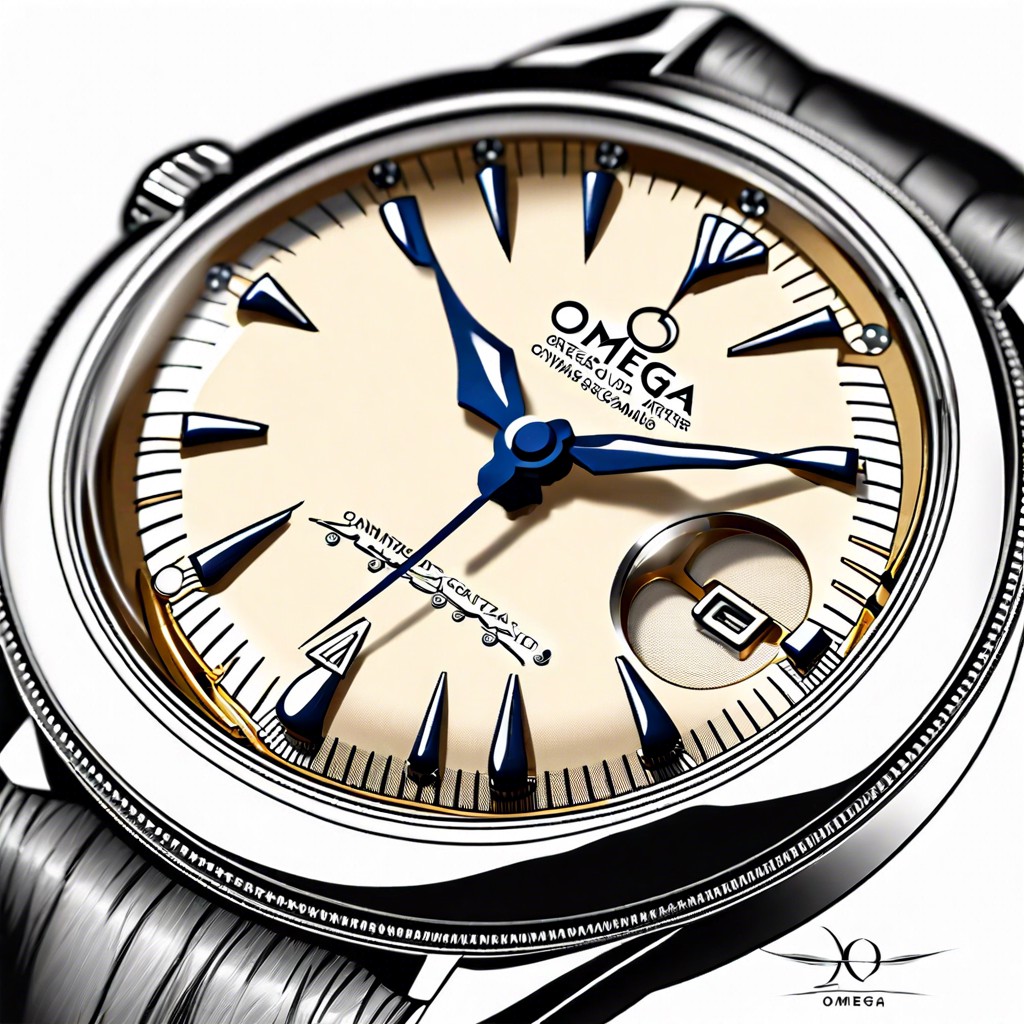Last updated on
Discover the enduring charm of vintage style engagement rings, including tips on selecting the perfect heirloom piece for your proposal.
Key takeaways:
- Vintage style engagement rings emulate specific historical periods.
- Characteristics of Victorian, Edwardian, Art Nouveau, and Art Deco rings.
- Look for intricate designs, milgrain detailing, and colored gemstones.
- Vintage style rings reflect history, tradition, and sustainability.
- Assess craftsmanship, materials, documentation, and ethical considerations.
Defining Vintage Style Engagement Rings

Vintage style engagement rings emulate the design attributes of specific historical periods, typically reflecting the aesthetics of the Victorian, Edwardian, Art Nouveau, Art Deco, and Retro eras. Unlike genuine antique rings, vintage style rings are not necessarily old; they are modern creations honoring past craftsmanship. These pieces often incorporate intricate filigree work, milgrain detailing, and use of colored gemstones alongside diamonds to capture the essence of bygone times. Popular motifs include floral and lace patterns, geometric shapes, and bold lines, with an emphasis on handcrafted artistry that stood at the heart of jewelry design in the 19th and early 20th centuries.
Characteristics of Vintage Style Engagement Rings

Vintage style engagement rings are characterized by their intricate designs that echo historical eras, namely the Victorian, Edwardian, Art Nouveau, and Art Deco periods. Each of these periods brings its distinctive elements to the designs:
- Victorian Era (1837-1901): Look for motifs like flowers, bows, and hearts. Rings from this period often feature rows of diamonds cut with older techniques such as the mine cut or rose cut, which give a softer brilliance compared to modern cuts.
- Edwardian Era (1901-1910): Filigree work is a hallmark of this period, where rings display intricate lace-like patterns. Platinum became the metal of choice, allowing for delicate yet strong settings that often included small diamonds or pearls.
- Art Nouveau (1890-1910): This style emphasizes organic and flowing designs with curving lines. Nature-inspired elements like leaves, vines, and insects are common motifs, and the use of enamel adds pops of color.
- Art Deco (1920-1935): Bold, geometric shapes and strong lines define Art Deco rings. Contrasting colors, often with calibrated cut gemstones and an emphasis on symmetry, typify this era’s engagement rings.
In addition to these period elements, vintage style engagement rings may also incorporate milgrain detailing, which involves a row of tiny bead shapes at the edges of the metal, adding a soft, textured finish. Another feature to look for is the use of colored gemstones, such as sapphires, emeralds, or rubies, which was more prevalent in antique jewelry than the modern preference for all-diamond designs.
Lastly, remember that ‘vintage style’ refers to modern rings designed to look like they are from a past era, while ‘vintage’ or ‘antique’ rings means the piece is genuinely from that time period. It is vital for buyers to distinguish between these to understand the value and craftsmanship of the ring they are considering.
The Significance of Choosing a Vintage Style Engagement Ring

Old-world charm and romantic stories often envelop vintage style engagement rings, making them an appealing choice for couples seeking a link to history and tradition. They embody the craftsmanship and design aesthetics of the past, which can reflect personal tastes and a fondness for the bygone eras they represent.
Opting for such a ring often suggests a reverence for longevity and sustainability, an attribute valued in both the ring and the marriage it symbolizes. It can also signal a desire for uniqueness, with intricate designs that are less commonly found in modern rings.
Furthermore, the decision to choose vintage style echoes a conscious move towards ethical consumerism, as these rings may be antiques, are often recycled or upcycled, effectively reducing the demand for new mining.
In a more personal vein, some may select vintage rings to honor family heritage, perhaps wearing a ring that once belonged to a loved one, reaffirming familial bonds and continuity through generations.
Evaluating the Quality of Vintage Style Engagement Rings

Assessing the craftsmanship is paramount; hand-engraving, milgrain detailing, and filigree work are hallmarks of vintage rings and indicators of the era’s artistry. Check for symmetry in patterns and consistency in details, as these are signs of a skilled jeweler’s work.
Materials used in vintage rings may vary. Older rings often feature platinum or yellow gold. Be aware that metals may have patinated over time, which can add to the ring’s character. Inspect the metal for any marks or stamps indicative of its quality and authenticity.
Gemstones in vintage rings often come with unique cuts, such as the Old European or mine cut, which differ from modern cuts in sparkle and shape. Verify the stone’s setting for security—prongs should be sturdy and intact. Look for any chips or wear that could affect the stone’s integrity.
Due diligence in assessing documentation is crucial. Certificates of authenticity, appraisals, or any provenance available can confirm the ring’s age and value. Verify the ring’s history to ensure its authenticity; reputable dealers should provide a reliable backstory or documentation.
Consideration of overall condition can’t be overlooked. While some signs of wear are normal, extensive damage or repairs could affect the ring’s value and durability. An appraisal by a certified gemologist can provide a professional assessment of the ring’s condition and worth.
Ethical Considerations in Vintage Style Rings

The allure of vintage style engagement rings often extends beyond their aesthetic to encapsulate ethical considerations. Opting for these rings can be a conscious choice for those looking to minimize their environmental footprint. The purchase of a vintage piece avoids the need for new mining, thereby conserving natural resources and reducing the demand for potentially exploitative labor practices associated with extracting precious stones and metals.
Buyers may also elect for a vintage style ring crafted using ethically sourced new materials. Such materials include conflict-free diamonds, recycled precious metals, and lab-grown gemstones, which offer a responsible alternative while maintaining the classic aesthetic of vintage designs.
When selecting a vintage style engagement ring, consider its provenance. Traceability can ensure that the ring does not have a contentious history or connections to unrest in its country of origin. Reputable dealers should provide transparent sourcing information and adherence to ethical standards.
Lastly, always approach the market with a mindful attitude toward preservation. Investing in a vintage style engagement ring supports the conservation of heritage and craftsmanship, contributing to the value and the story behind the piece, without necessitating the creation of new items.




